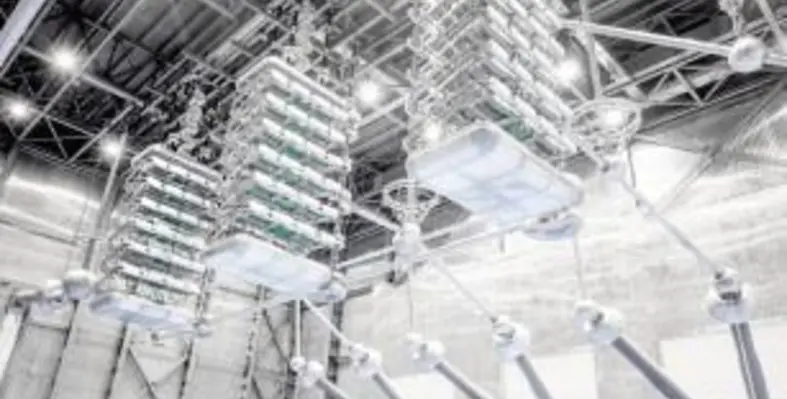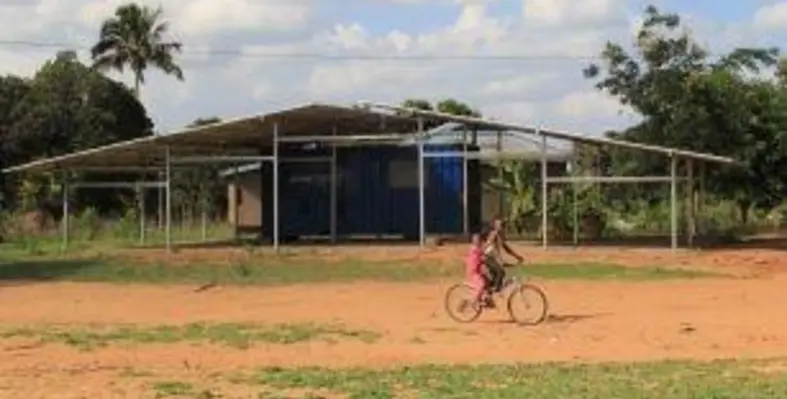
The groundbreaking intercontinental link will enable the Kingdom of Saudi Arabia and the Arab Republic of Egypt to exchange electricity, increase grid resilience and support a carbon-neutral future. (Image source: Hitachi ABB Power Grids Ltd)
Hitachi ABB Power Grids has announced that it is the lead in a consortium that has been awarded a major contract worth several hundreds of millions of US dollars from the Saudi Electricity Company and the Egyptian Electricity Transmission Company
The award is for the first ever large-scale HVDC interconnection in the Middle East and North Africa, enabling the Kingdom of Saudi Arabia (KSA) and the Arab Republic of Egypt to exchange up to 3,000 MW of electricity – much of which is expected to be generated from renewable energy sources in the future. The connection will support the flow of power in multiple directions between three terminals and will be the first interconnection allowing the exchange of electric power between both countries.
The global technology and market leader will be delivering advanced technologies for the high-voltage direct current (HVDC) power link between the countries. This includes the sup-ply of three HVDC converter stations located at Medina and Tabuk in KSA, and Badr in Egypt1. The business will also be providing system studies, design and engineering, trans-formers, valves, high-voltage equipment, technical advisory, commissioning and service, in collaboration with two consortium partners – Saudi services for electro mechanic works in KSA and orascom construction in Egypt.
The HVDC link will give Egypt access to the interconnected power grids of the Arabian Gulf, and KSA access to those of North Africa, whilst strengthening grid resilience and power sup-ply security. Both countries have ambitious carbon-neutrality targets. The Kingdom of Saudi Arabia is working to increase the share of natural gas and renewable energy sources to ap-proximately 50% by 20302, and the Arab Republic of Egypt intends to increase the supply of electricity generated from renewable sources to 42% by 20353.
H.E. Egypt’s minister of Electricity and Renewable Energy, Dr Mohamed Shaker El-Markabi, affirmed that the project reflects the depth of Egyptian-Saudi relations throughout their rich history and the wise leadership of both countries. El-Markabi also highlighted the unceasing endeavors of Egypt & KSA to attain sustainable social and economic goals across the entire Arab world. He affirmed that such joint interconnection is a kick-start for a pan-Arab interconnection, complementing their visions towards 2030.
Egypt’s minister of electricity and renewable energy added that the robust connection be-tween two of the largest electrical networks in the region, promise stability and reliability on power supply, with a thrive in the economic and developmental returns on exchanging around 3000 megawatts of electricity.
Exhibiting their fruitful expansion plans for renewable energy resources, such cooperation is considered as a safety valve for the unstable nature of renewable energy. Huge investments shall be dedicated in the near future to address such unsteady nature.
Claudio Facchin, CEO, Hitachi ABB Power Grids, commented, “We are proud to have the opportu-nity to work with our esteemed customers and partners in the Kingdom of Saudi Arabia and the Arab Republic of Egypt for this prestigious project. At Hitachi ABB Power Grids, we are enabling interconnections between continents, with unique capability to reliably exchange electric power at scale, across borders and time zones.”
More on the Saudi Arabia – Egypt HVDC interconnection:
The HVDC interconnection will transport up to 3,000 MW of electricity at 500 kV along 1,350 km using overhead power lines and a subsea cable across the Red Sea. The power will be able to flow in multiple directions between the three terminals – for instance, from Tabuk to Badr, but also simultaneously from Tabuk to Medina.
HVDC is a key enabling technology of the sustainable energy transition, and Hitachi ABB Power Grids is continually adding new capacity to meet the growing demand for HVDC solu-tions globally.










